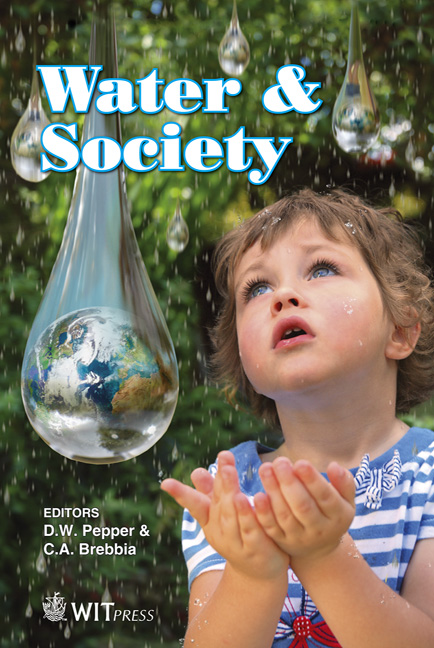Thermosensitive Demineralization Hydrogel For Water Softening: Preliminary Batch And Column Experiments
Price
Free (open access)
Transaction
Volume
153
Pages
12
Page Range
329 - 340
Published
2011
Size
3,067 kb
Paper DOI
10.2495/WS110301
Copyright
WIT Press
Author(s)
S. Olivero, S. G. J. Heijman, J. P. A. Custers, G. Dascola & L. C. Rietveld
Abstract
Softening remains one of the main problems in industrial and domestic processes. Polyvalent ions such as Ca and Mg form poorly soluble salts which precipitate in pipes and heating apparatuses, resulting in potential clogging or efficiency losses in heat exchangers. In a washing process, calcium and other ions can precipitate with the detergent molecules, inhibiting the cleaning action of soaps. Ion-exchange is used as a softening process, but the reinforcement of regulations regarding the discharge of regenerants makes this solution more and more expensive. The present work is meant to introduce experimental and modeling results of a thermosensitive hydrogel based on a LCST polymer, able to soften water at low temperature, and regenerable with low-grade waste heat without the addition of any chemical product. The polyampholytic polymer matter of this research is a semi-IPN (Interpenetrating Polymer Network) which presents a crosslinked polymer matrix comprising PNIPAAm and basic cationic groups, interwoven by a polymeric chain including acidic anionic monomers. In preliminary batch experiments, with full grain size of the exchanger and varying concentration of calcium in the starting synthetic solution, the adsorption parameters according to Freundlich’s approach can be measured. Modeling based on LDF-theory using the obtained parameters shows an accurate prediction of the breakthrough curve of subsequent column experiments. The research illustrates lower capacity of the hydrogel than commonly used ion
Keywords
LCST polymers, water softening, thermoregenerable resins, LDF





